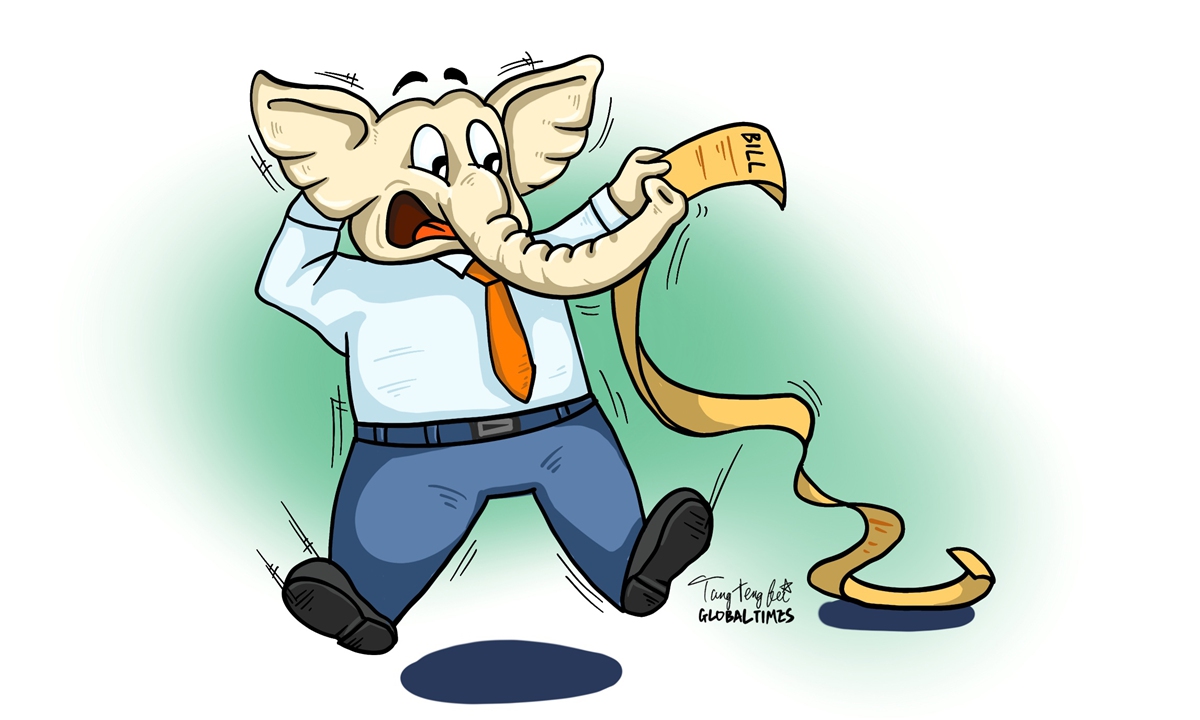India’s 5G rollout is bound to be pricey if it shuns Huawei
By Qian Feng Source: Global Times Published: 2020/9/28 20:21:30

Illustration: Tang Tengfei/GT
India and Japan are reportedly to tie-up in development of 5G technology, with the assistance of other QUAD dialogue members - the US, Australia and Israel.While there remain great uncertainties in the prospects of the 5G cooperation between India and Japan, this latest move shows that New Delhi is aware of one point: the country's 5G plan needs to have more partners.
And, the recent reversal in India's attitude toward the Chinese technology giants Huawei and ZTE, which now lead the world in 5G innovations, also supports this point.
Driven by a wave of anti-China sentiment following the fatal border clash between the two countries' frontier troops in June, India has imposed a string of restrictions and outright bans on Chinese business and investments.
For a time, India had shunned Huawei's 5G gears in the trial by its telecom operators and instead favored some European telecom equipment suppliers.
In a new twist to the saga, India's Minister of State for Electronics and Information Technology Sanjay Dhotre said the government had no plan to exclude Huawei and ZTE from its 5G network infrastructure rollout, according to a report by Business Standard.
The reason for the sudden attitude reversal is obvious. After excluding Huawei and ZTE, due to the lack of competition, India can easily fall into very passive positions in its negotiation with European suppliers. India must hardly bear their excessive price demands.
While India is tying itself in knots to exclude Chinese tech players in the development of its 4G and 5G networks due to rising border tensions, Finnish telecom equipment maker Nokia in August threatened to pull support if dues of over $121 million are not cleared "immediately" by the leading Indian state-run telecom company.
Perhaps New Delhi still regards the change of attitude toward Huawei and ZTE as a bargaining chip with suppliers from Europe, but India should realize that the most reasonable decision for the country is to truly revise its hardline policy toward Chinese companies like Huawei and ZTE. Introducing competition in India market will only benefit itself.
If India's reversal of attitude toward Huawei and ZTE is just a flip-flopping trick, then it is bound to pay higher prices on outdated 5G equipment and technology.
A recent op-ed piece in India Express tried to assess the reason behind Indian government's odd tough stance against China both at the border and on the economic front amid once-in-a-century coronavirus pandemic. The article noted that one hypothesis is that New Delhi is demonstrating its alignment intention with a broader US strategy against Chinese technology players.
If the Indian government really decides to lurch to the US side in terms of economy and technology, as described in the hypothesis, the endgame will undoubtedly hurt India's national interests.
Under the impact of the pandemic, India's economy has encountered major difficulties, and India's irrational boycott of Chinese apps and investment has only driven the Indian economy worse. At present, repairing China-India relations and correcting previous deviations are what India needs most.
Speaking at a virtual conference of the World Economic Forum, Indian External Affairs Minister S Jaishankar said last Thursday that India and China are going through an "unprecedented" situation.
His statement reflects that although the anti-China sentiment in India has remained high, Indian policymakers realized that even though the relationship between the two countries is experiencing ups and downs, it must not break. If India is bent on fraying its relations with China and drives away Chinese investment, India's economic and technological development will likely plunge into disaster.
The author is director of the research department of the National Strategy Institute at Tsinghua University. bizopinion@globaltimes.com.cn
Posted in: EXPERT ASSESSMENT